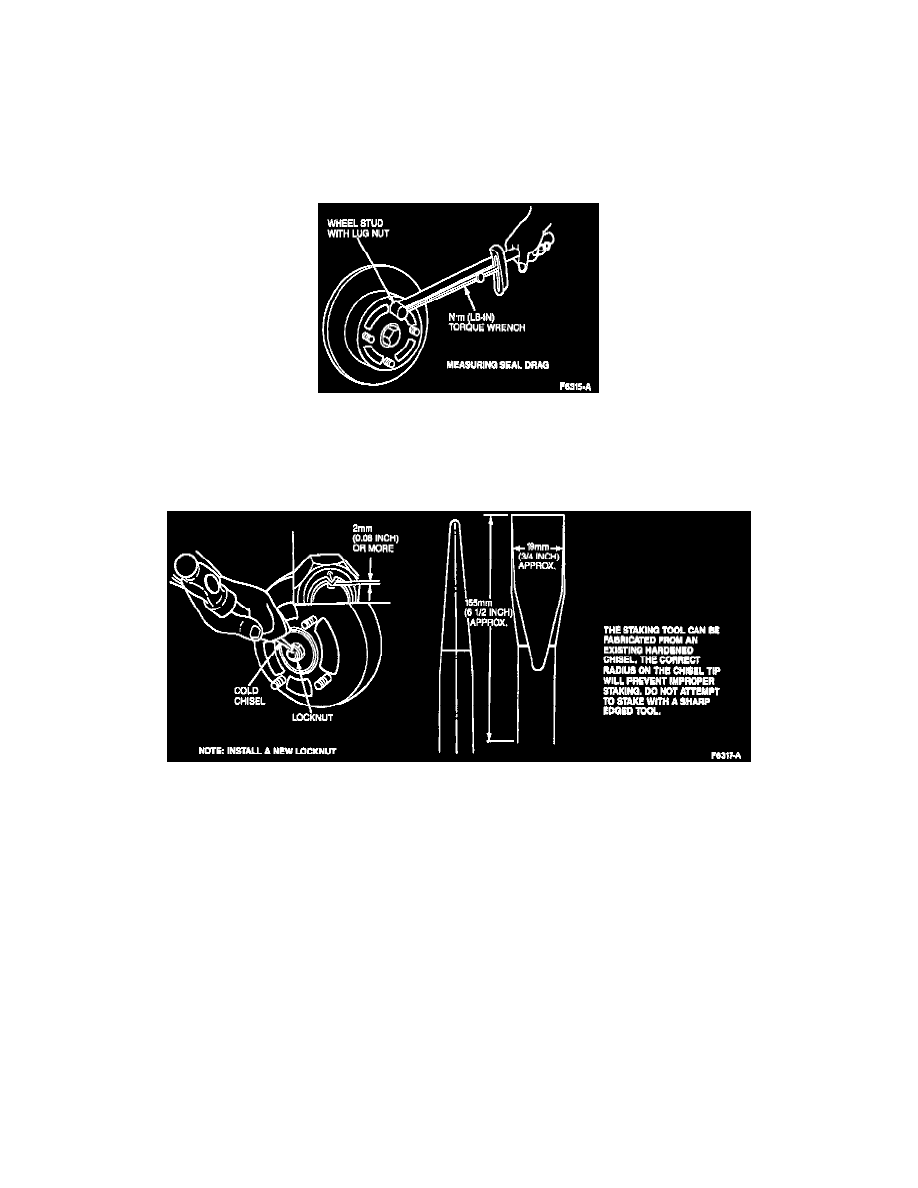Capri L4-1597cc 1.6L DOHC Turbo (1991)

To measure seal drag, place a N.m(lb-in) torque wrench onto a lug nut positioned at 12 O'CLOCK and measure the amount of force required to
ROTATE the brake rotor. PULL the torque wrench and note the reading when rotation STARTS.
12. To determine the specified preload, add the amount of seal drag to the required preload which is 0.15-0.49 N.m(1.3-4.3 lb-in).
For example: If seal drag measures 0.25 N.m(2.2 lb-in), this amount must be ADDED to the required preload:
a. 0.15 N.m + 0.25 N.m =0.40 N.m MINIMUM.
b. (1.3 lb-in + 2.2 lb-in = 3.5 lb-in MINIMUM).
c. 0.49 N.m + 0.25 N.m =0.74 N.m MAXIMUM.
d. (4.3 lb-in + 2.2 lb-in = 6.5 lb-in MAXIMUM).
In the above example, when the seal drag is ADDED the specified amount of preload becomes 0.40 to 0.74 N.m (3.5 to 6.5 lb-in).
13. Tighten the wheel bearing locknut a slight amount.
Measuring Seal Drag
14. Place the N.m (lb-in) torque wrench onto a lug nut positioned at 12 O'CLOCK and measure the amount of PULL required to ROTATE the brake
rotor.
Continue tightening the attaching nut until the specified amount of preload is measured with the torque wrench.
Stake The New Lock Nut
15. Stake new locknut using a cold chisel with the cutting edge rounded as shown.
CAUTION: If the nut splits or cracks after staking, It must be replaced with a new nut.
16. Install the grease cap.
17. Install the wheel and tire assembly.
18. Lower vehicle.
19. Tighten the wheel lug nuts to 90-120 N.m (67-88 lb-ft).
